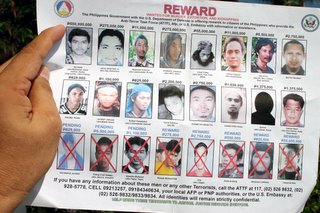NATIONAL UNION OF JOURNALISTS OF THE PHILIPPINES
The Philippine has once again proved that it is the most dangerous country in Asia-Pacific for journalists, as 10 of them were killed in 2005. The International Federation of Journalists (IFJ), in a report released Jan. 23, 2005, pointed out that the Philippines is next only to Iraq in terms of media deaths.
"Impunity in the killing of journalists remains the intolerablescandal of our times that can no longer be ignored by the internationalcommunity," said IFJ general secretary Aidan White.
Indeed, in less than a week, two Filipino journalists have been murdered.
On Jan. 20, Rolly Canete, a freelance broadcaster in PagadianCity, was gunned down. The next day, Graciano Aquino, a columnist in Bataan and a former DZRH correspondent, was also killed.
The NUJP isinvestigating the circumstances behind these latest murders.
(We invite the news media to drop by or call the NUJP office between 12noon and 2 p.m. today, Jan. 23, for a chance to interview Emma Walters,one of IFJ's officers, to talk more about the IFJ report and thelatest killings. NUJP leaders will also be available.The NUJP office is at 109-A Scout Castor Street, Quezon City. The telephone number is 4117768. Look for Ayi, Weng or Caloy.)
The IFJ said 2005 proved to be the most dangerous year on record for journalistsworking not only in the Asia-Pacific region but also worldwide.
"2005 was a year of tragedy and the targeting of journalists in theAsia-Pacific region," said IFJ president Christopher Warren.
Of the grim total of 150 journalists and media workers killed in 2005,some 36 were from the Asia-Pacific region. The Philippines once again earned its place the most dangerous Asia-Pacific country for journalists to work in with 10 killings, second only to war-torn Iraq where 35 media workers were killed.
The killers of the Filipino journalists continue escape any form of justice. Once more, South Asia is the most dangerous region within theAsia-Pacific, with journalists being killed in Afghanistan (2), Bangladesh (3), India (3), Pakistan (6), Sri Lanka (4) and Nepal (2).
The massive earthquake that struck South Asia was responsible for thedeaths of three journalists. Worldwide, some 61 journalists and media workers were killed whendisaster struck while on assignment -- 48 of them alone in a Tehran plane crash where questions are being asked about the safety of the military aircraft in which they were travelling.
But disturbingly, the IFJ report says that around 89 journalists and media people were killed "in the line of duty" -- many assassinated by ruthless killers working for political gangs or criminals.
The report says more than 90 per cent of these cases do not result in serious investigations by authorities with only a handful of thekillers are ever brought to trial. A combination of police corruption, judicial incompetence and political indifference creates a culture of neglect when it comes to media deaths, the IFJ said.
"Impunity in the killing of journalists remains the intolerablescandal of our times that can no longer be ignored by the internationalcommunity," said IFJ general secretary Aidan White.
The IFJ has called for action by the United Nations Security Council and has pressed Secretary General Kofi Annan to mobilise governments to act against the targeting and killing of journalists.
The IFJ report this year includes information on the IFJ's solidarityand assistance program, the IFJ Safety Fund.
Some 100,000 Euro was raised during a special appeal at the beginning of 2005 in response to the Tsunami disaster in 2004 in which around 89 journalists and media staff were reported dead or missing.
In addition, the fund made payments to the families and victims of killings in more than 25 countries as well as to victims of the Pakistan earthquake disaster in which three journalists died.
The IFJ has created a special disaster relief fund in the name of former IFJ Senior Vice President and Chair of the European Federationof Journalists, Gustl Glattfelder who died last year.
 WANTED:The US military releases new posters of wanted Abu Sayyaf and Jemaah Islamiya terrorists in the southern Philippines. Washington has offered as much as $10 million dollar for the capture of JI bomb-maker Dulmatin and $5 million for the arrest of Khadaffy Janjalani, head of the local Abu Sayyaf group, both leaders are blamed for the spate of bombings in the Philippines and Indonesia. (Zamboanga Journal)
WANTED:The US military releases new posters of wanted Abu Sayyaf and Jemaah Islamiya terrorists in the southern Philippines. Washington has offered as much as $10 million dollar for the capture of JI bomb-maker Dulmatin and $5 million for the arrest of Khadaffy Janjalani, head of the local Abu Sayyaf group, both leaders are blamed for the spate of bombings in the Philippines and Indonesia. (Zamboanga Journal)













